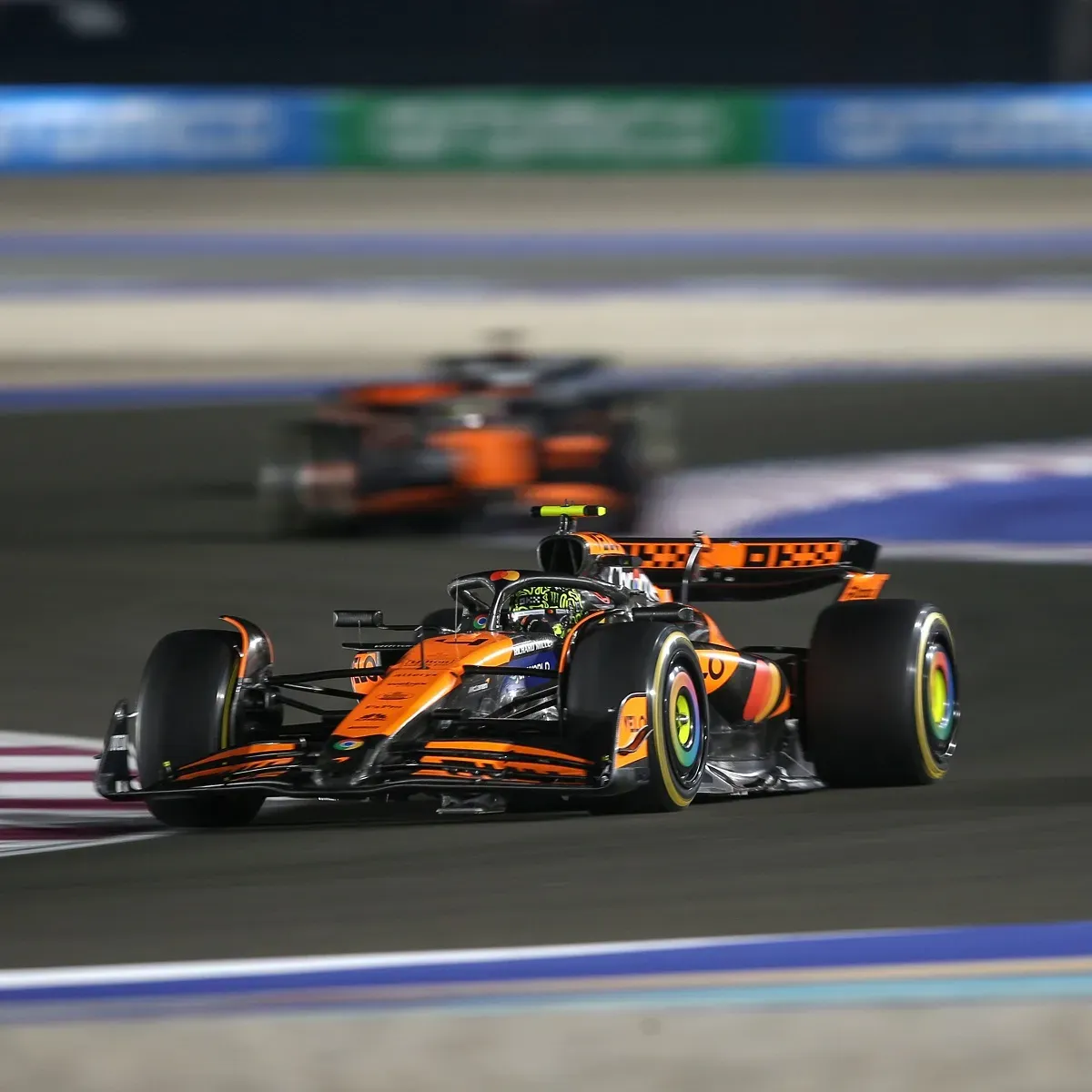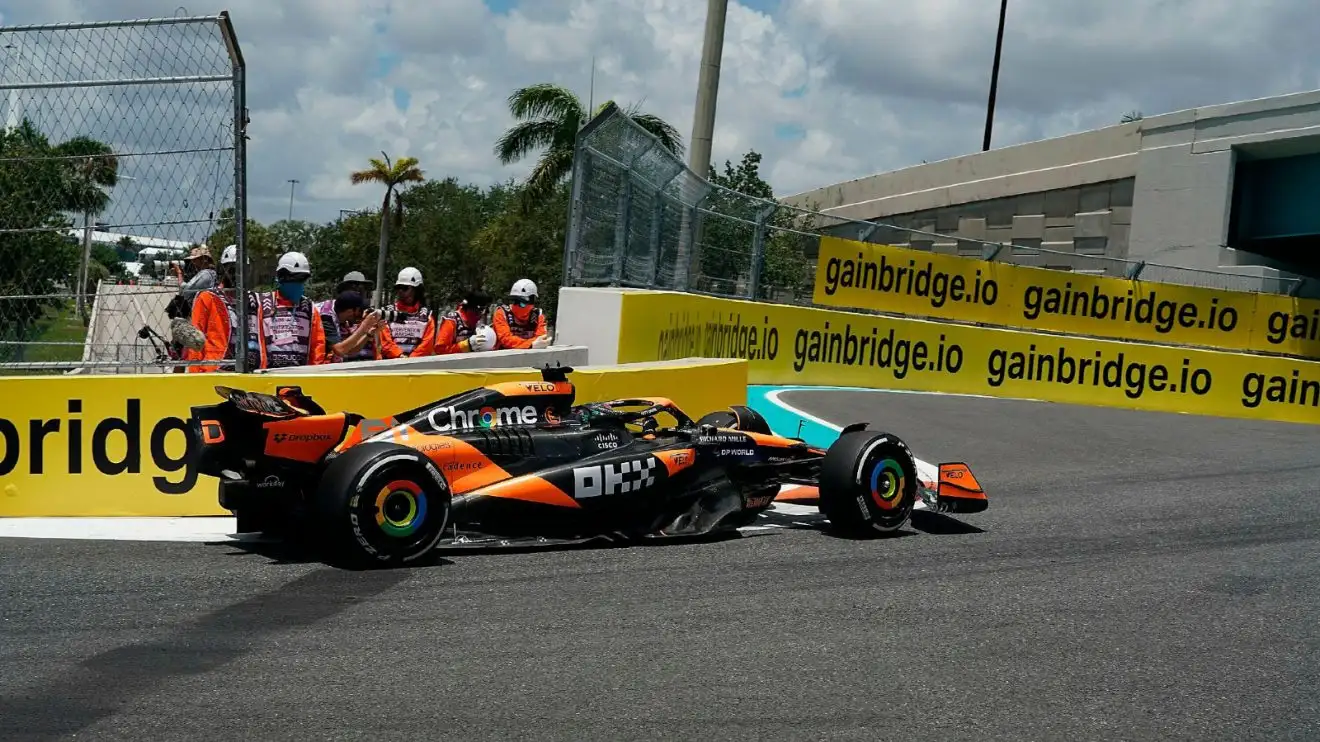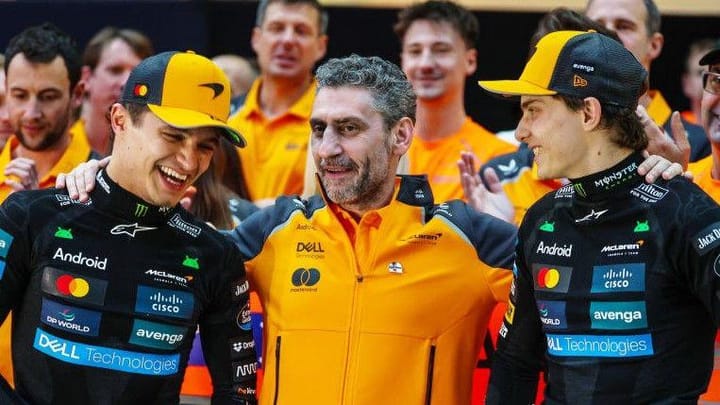McLaren's Secret Weapon? Unpacking the Brake Rumours and FIA Clearance
The Formula 1 paddock is a hotbed of innovation and, let's be honest, a fair amount of speculation. Recently, the rumour mill has been churning furiously around McLaren's seemingly exceptional tyre management during races.

Many eyes are pointed squarely at the rear brake system of their MCL39 challenger. The suggestion? That McLaren has found a way to masterfully control temperatures in this critical area, delivering a significant advantage by preventing tyre overheating throughout a race stint.

The intrigue intensified when whispers emerged that Red Bull Racing had somehow obtained thermal imaging camera shots of McLaren's rear brake drums, allegedly captured during a pitstop at the Japanese Grand Prix. As is often the case in the secretive world of F1, this sparked a flurry of imaginative (and often outlandish) theories. Everything from phase change materials altering internal airflow to blowing vapour inside the drums, intricate carbon fibre weave subtly leaking cool air into the wheel rims, and even the rather far-fetched idea of filling the tyres with water, did the rounds in the paddock gossip chain.
Adding fuel to the fire, a rumour even suggested that the FIA had confiscated parts from the McLaren during the Bahrain Grand Prix, supposedly explaining a perceived dip in their dominance during the Middle Eastern races. While this proved to be unfounded (sadly, for those of us who enjoy a good conspiracy), it highlighted the intense scrutiny McLaren was suddenly under.

In the relentless pursuit of performance, F1 teams employ a myriad of clever solutions to effectively isolate the intense heat generated by the brake discs and channel it away from the rear of the car, thus preventing the wheel rims and, crucially, the tyres from overheating. A close examination of the rear brake setups across the grid reveals that McLaren's approach appears to be particularly intricate in its execution. While some teams opt for designs that leave elements more exposed to aid cooling, McLaren seems to have aggressively enclosed their brake components – likely utilising ceramic-lined carbon fibre to enhance heat insulation. While a detailed analysis of McLaren's specific brake disc design is beyond the scope here (and best left to dedicated technical experts), the visual evidence suggests a highly focused approach to heat management.
However, it's vital to remember that the FIA's technical regulations in Formula 1 are incredibly stringent, explicitly outlawing the use of phase change materials or any form of fluid specifically designed to alter component temperatures in this manner. F1 teams face strict limitations on the materials they are permitted to use in car construction. Certain specific materials are explicitly banned, including metal matrix composites, additive manufactured materials containing beryllium, and 3D fibre reinforcement of polymer composite materials. Phase-changing materials also fall under close scrutiny, with regulations specifically prohibiting "shape memory materials except for piezoelectric materials used in electrical sensors." This effectively rules out any material that utilises temperature to undergo a change in its structure or composition for performance-enhancing purposes.

Given the swirling rumours, it was perhaps inevitable that the FIA would take a closer look. Following the Miami Grand Prix, an official investigation was launched into McLaren's rear brake system. However, the Woking-based team received a clean bill of health as of yesterday (May 15th, 2025). The FIA released a technical delegate's report explicitly stating that Drivers' Championship leader Oscar Piastri's McLaren MCL39 had been randomly selected for thorough post-race checks in Miami. This intensive inspection included detailed physical examinations of the wheel bodywork assemblies. The FIA's concise statement concluded that "all inspected components were found to be in conformance with the 2025 Formula One technical regulations."
So, the intense scrutiny on McLaren's tyres and brakes has been officially addressed, with the FIA unequivocally clearing the team of any wrongdoing. The innovative design of their rear brake system appears to be a testament to clever engineering within the existing regulations, rather than a breach of them.
However, the aerodynamic intricacies of modern Formula 1 cars mean the rumour mill is unlikely to fall silent for long. The focus in the paddock has now subtly shifted, with teams and observers now keenly awaiting clarification from the FIA regarding the flexible bodywork that McLaren is currently running. The quest for marginal gains in Formula 1 is relentless, and as one area of suspicion is cleared, another inevitably emerges under the microscope.
What do you make of the intense technical scrutiny in Formula 1? Is it a necessary part of maintaining a level playing field, or does it stifle innovation? Share your thoughts in the comments below!




Comments ()